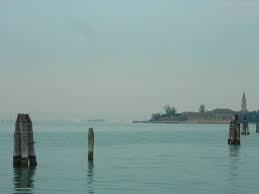The Plague Is Back
As the New Mexico Department of Heath recently reported,
 There are, it seems, three kinds of plague—pneumonic includes dangerous pneumonia, septicemic p makes the skin and other body parts turn black, and bubonic which causes swelling of the lymph nodes into baseballs. In other words, plague is not just a generic terms for any disease that spreads rapidly and potentially kills millions. Plagues is, instead, a particular bacteria called Yersinia pestis.
There are, it seems, three kinds of plague—pneumonic includes dangerous pneumonia, septicemic p makes the skin and other body parts turn black, and bubonic which causes swelling of the lymph nodes into baseballs. In other words, plague is not just a generic terms for any disease that spreads rapidly and potentially kills millions. Plagues is, instead, a particular bacteria called Yersinia pestis.  What makes plague different from other contagious disease is the rapidity of its spread and the high risk of fatality if not treated.
What makes plague different from other contagious disease is the rapidity of its spread and the high risk of fatality if not treated.We can blame rodents, and the fleas that bite them, for spreading plague to people, but who we really should blame is ourselves. Plague, and any infections disease, is a disease of civilization. That is, these scourges can spread because humans like to live in big groups and those groups are just the host that Yersinia pestis thrives on.
Over the centuries, plague has devastated various populations and changed the history of the Middle ages and the Renaissance of Europe. But plague also initiated the cornerstone of public heath, and that happened in Venice, Italy.
In 1348, Venice was the first city that attempted to stop the spread of disease by making ships anchor off shore for 40 days (quaranta is Italian for 40, thus quarantine), and this was before anyone had a good idea how diseases spread. That quarantine was a sign of the strength of The Venetian Republic's desire to protect it citizens and its commerce which depended on ships coming and going.

That same year Venice implemented a rule that anyone who died of plague had to be buried on remote islands far away from the city, suggesting they knew, or hypothesized, that one could get this disease even from a corpse.
In 1423 Venice then built a permanent plague hospital on a lagoon island just offshore — Santa Maria di Nazareth — where victims and their families were deported at the first sign of plague. Eventually that place was called Lazaretto (after Lazarus, a hope that someone could rise from the dead, even from plague). Other cities then followed Venice's example.

And today we quarantine everything from people to plants as a standard public heath measure, the best, and easiest, just-in-case measure to protect large populations from each other.
[image error]
Published on July 05, 2017 11:03
No comments have been added yet.



